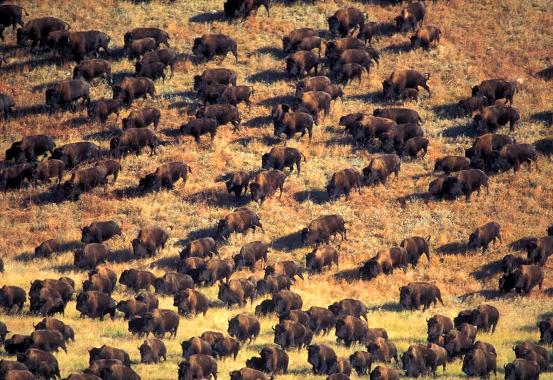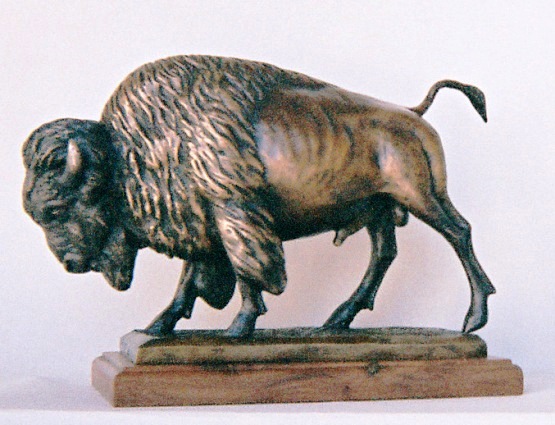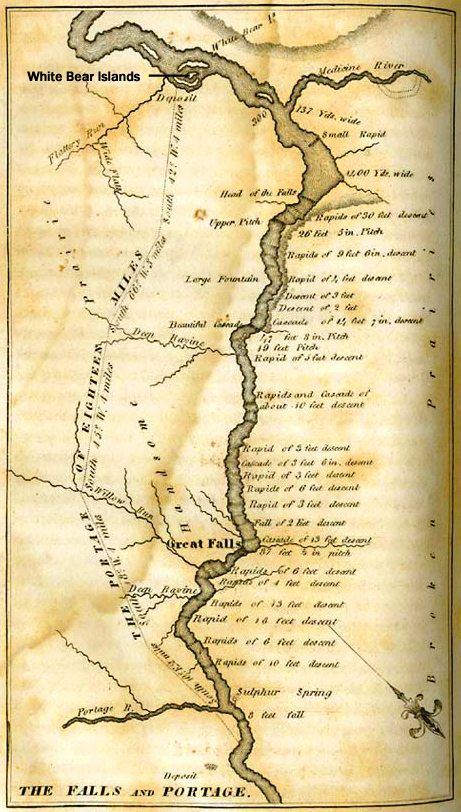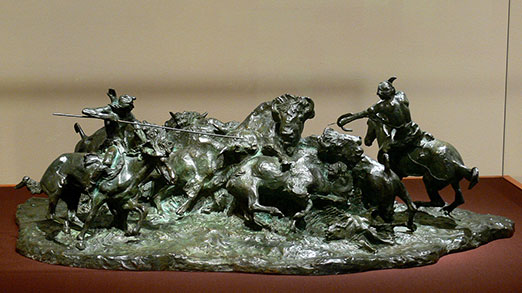|

The fate of the American bison was inexplicably
linked to the expansion of European exploration and settlement of
the North American continent.

The buffalo was the "walking
commissary’"
of the American plains indian cultures from before European settlement
began in 1607 until the last Sioux buffalo hunt in 1883

American Bison by Chester Comstock
commissioned to honor donors to
"The Villages" Florida charter school
© 2007 Comstock Sculpture Studio
About encounters with buffalo from the Journal
of the Louis and Clark Expedition 1803-1806

On the return voyage the expedition reached
the old camp at White Bear Islands, above the Great Falls on
the Missouri river, July 11 1806. The following accounts were
recorded in the days following their arrival by Meriwether Lewis.
July 7, 11, 12, 1806
N. 45. E. 2M. passed ridge between Columbia and Missouri rivers.
Hunters go down Medicine river to find Elk, meet up with us across
the
plain leading to White Bear Islands. Huge "hirrds" of
buffalo. Mating
season for buffalo, bulls produce a belligerent sound. Immense amounts
of
bulls allow roar to remain constant. Amazing sight to see so many
buffalo.
Horses must get used to buffalo, never seen them before noises frightened
them.
Reached white bear islands at bottom of Missouri river at
least 10 thousand buffalo within 2 miles.

Map draw of Lewis and Clark Portage around
the Great Falls

Landsat image of Great Falls Montana
Aug. 2000
200 years ago when Lewis and Clark reached this area on July 12,1806
there were
ten thousand buffalo within two miles of the White Bear Islands.
July 14, 1806
Carriage wheels dug up, found in good condition. Meat was set in
sun to dry and cut thinner to speed the drying process. Buffalo
meat is
scrumptious compared to nasty roots we've been eating. Money is
too wet to
deposit so I take the precaution of drying it high up in scaffolds
covered
with skins. Wolves were killed by the hunters. There are many wolves
surrounding us, howling and such. They have replaced the buffalo.
I saw 27
dead buffalo, huge animals. Drewyer has not returned.
July 16, 1806
Everywhere I look I see a beautiful shade of green, spotted with
thousands of buffaloes. The wolves have decreased in number. We
managed to
kill a buffalo and took the rear and tongue for ample amounts of
meat.
Once we came to the rose river, I decided to camp. We saw a bleeding
buffalo , this buffalo led us to believe that indians were near,
possible
the blackfoots. We want to avoid any contact with these indians,
they may
try to capture our horses. This a dangerous job! The blackfoots
an the
Minnetares of Fort (Indian tribes) are vicious and wild, we must
AVOID
them at all costs.

Charlie Russell's 1924 sculpture of indians
hunting
Buffalo on the high plains of Montana
"Meat for Wild Men"
July 18,19, 1806
More huge herds of buffalo for the last twelve miles. Wolves,
antelopes,and horses were also spotted. Traveled five miles to Maria's
river, got there around 6 p.m.camped on the west side after killing
some
buffalo. It has become extremely cold, rainy and windy. The weather
is
terrible! To add to the unpleasantness, a couple a wolves paid us
a visit
today, I managed to shoot one.
These accounts of encounters with buffalo were recorded during
the return trip by Meriwether Lewis during their travels between
the Rocky Mountain Front, the Great Falls and down river forty
miles to the confluence of Maria's river with the Missouri, in
of July 1806

Articles on the expansion
of the American west and the fate of the American Buffalo
during the American 19th century
|
|
